Top Brands Using Shopify: Behind the Screens of Success

According to BuiltWith, Shopify has powered around 5.66 million active online stores around the world in 2025, including many famous brands that use Shopify to scale globally.
Starting from the smallest startups to billion-dollar giants, including some of the biggest brands, choose Shopify for three key reasons: flexibility, scalability, and foundability.
These three pillars are what matter when scaling. That is why Shopify created Shopify Plus, an enterprise-grade platform that helps fast-growing brands operate high-volume selling channels and build custom storefronts.
In this post, we’ll take you through how leading brands grow through Shopify. Let’s go through the aspects of technology, design, and user experience, and understand how the platform operates in a competitive e-commerce environment.
In a Nutshell
Top global brands like Gymshark, Kylie Cosmetics, and Taylor Swift use Shopify for its flexibility, scalability, and reliability, helping them handle massive traffic, customize experiences, and grow efficiently in a competitive e-commerce landscape.
What Are the Elements of a Great Shopify Store?
A well-designed Shopify store looks good and runs smoothly. It should have a clean layout, appealing photos, and a consistent style that reflects your brand. It needs to be easy to find what you want, no matter whether you are on a computer or mobile.
A website that takes too long to load can frustrate customers. Written product descriptions attract customers to complete their order. Making sure payment methods are safe or even using a one-page checkout process won't make customers leave their shopping carts.
Customer reviews not only promote the products but also help build trust, too. Don't forget to utilize the built-in Shopify tools like SEO and analytics to help grow your store.
When all of these aspects come together, it gives your Shopify store a polished, professional feel that can create a loyal customer.
Top Brands Using Shopify
1. Gymshark
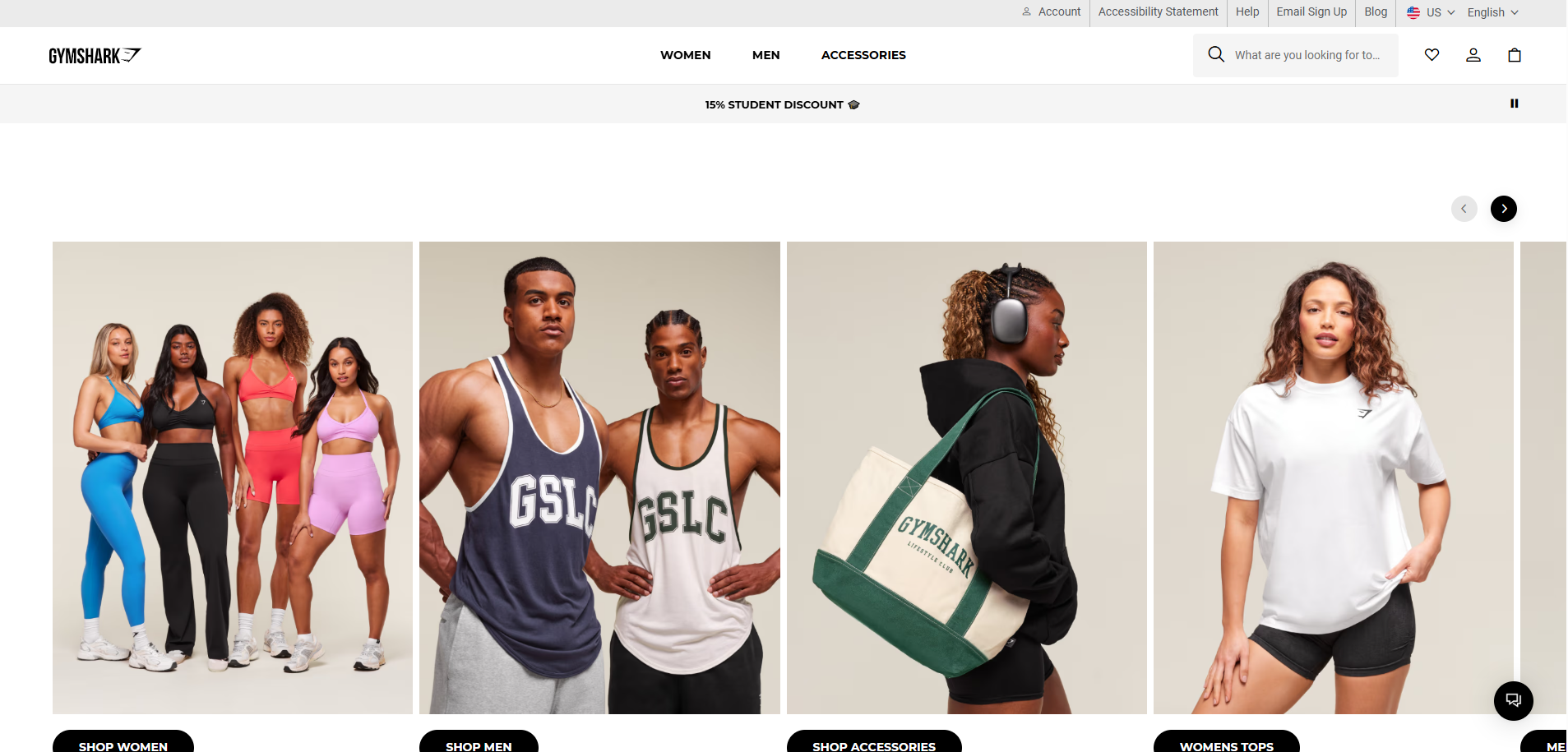 Gymshark was founded in 2012 in a garage in the UK by Ben Francis. At the time, it was a small fitness apparel brand with big visions. The company was using Adobe Commerce at the time, and with Gymshark's progress, it created a number of challenges, particularly when it experienced a critical system crash on Black Friday in 2015, resulting in over £100,000 in lost sales and customers.
Gymshark was founded in 2012 in a garage in the UK by Ben Francis. At the time, it was a small fitness apparel brand with big visions. The company was using Adobe Commerce at the time, and with Gymshark's progress, it created a number of challenges, particularly when it experienced a critical system crash on Black Friday in 2015, resulting in over £100,000 in lost sales and customers.
A rethink of our future strategy was needed as we had outgrown our old infrastructure.
Maxwell Petitjean, Product Insight Manager of Gymshark
After several setbacks, Gymshark made the decision to migrate to Shopify Plus based on its scalability, speed of launch, and continued performance.
Shopify Plus’s customer-focused culture and best practices have been truly inspiring. We’ll be bringing some of those learnings back to Gymshark.
Steve Hewitt, Former CEO of Gymshark
With the toolkit Shopify enables, like Shopify Scripts and POS, Gymshark could customize checkout experiences, offer dynamic sales, and create unique offline events that encourage customer loyalty.
Moreover, to improve its digital performance, Gymshark used Shopify POS to bridge the gap between online commerce and physical retail by putting on immersive events and world tours where fans could connect with fitness influencers and shop in person, further building its reputation for putting the community first.
Today, Gymshark operates in over 230 countries, and depending on peak volume days, they process thousands of orders per minute without breaking. The shift to Shopify Plus was crucial to Gymshark's transformation from a passion project into a globally recognized brand shaping fitness culture.
2. Kylie Cosmetics
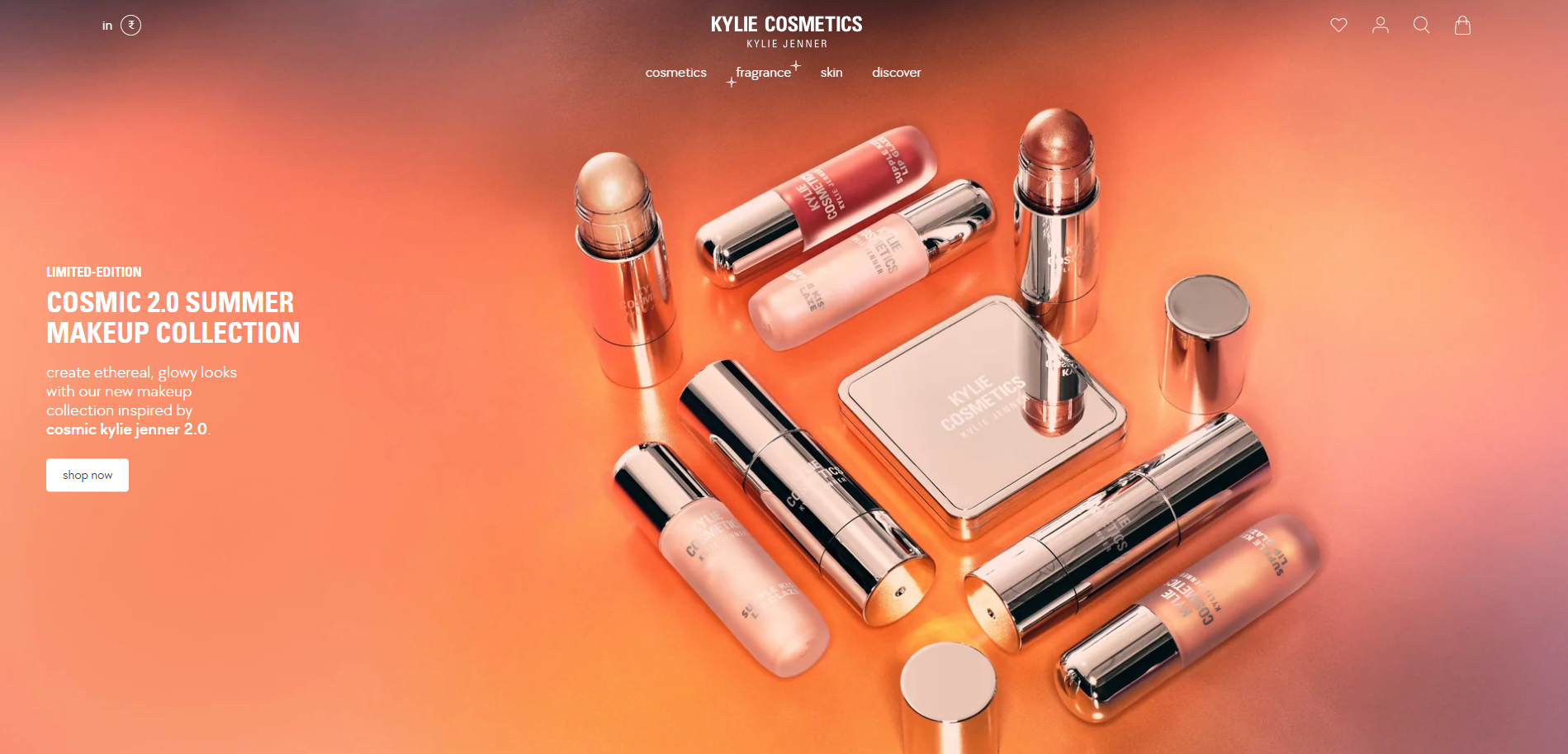 Kylie Cosmetics began as a beauty sensation in 2015 by Kylie Jenner after the 15,000 initial lip kits sold out in less than one minute. But the incredible growth came with challenges. The biggest one was managing the flash-sale traffic, especially as they were looking to scale globally.
Kylie Cosmetics began as a beauty sensation in 2015 by Kylie Jenner after the 15,000 initial lip kits sold out in less than one minute. But the incredible growth came with challenges. The biggest one was managing the flash-sale traffic, especially as they were looking to scale globally.
To support this tremendous growth, Kylie Cosmetics moved to Shopify Plus, looking to move to a platform that could both manage massive demand but could also remain flexible.
Shopify’s solid infrastructure allowed Kylie's brand to manage millions worth of traffic and sales with real checkouts and live transactions, and virtually no downtime. Also, as Kylie Cosmetics didn’t have a physical store, Shopify gave Kylie’s company flexibility by being able to effectively launch and manage an online business with low overhead costs.
Shopify also enabled Kylie’s incredibly successful pop-up stores, combining all the best things of digital retail with physical retail for these experiential events. Her first-ever pop-up was in 2016 in Los Angeles, with all the stock and products managed through Shopify POS, with fans lining up in long queues for hours to go through Kylie's pop-up.
The LA pop-up was designed to look like Kylie Jenner’s bedroom, offered exclusive products, and provided a real experience for fans that contributed to customer loyalty and engagement with the brand.
3. Taylor Swift
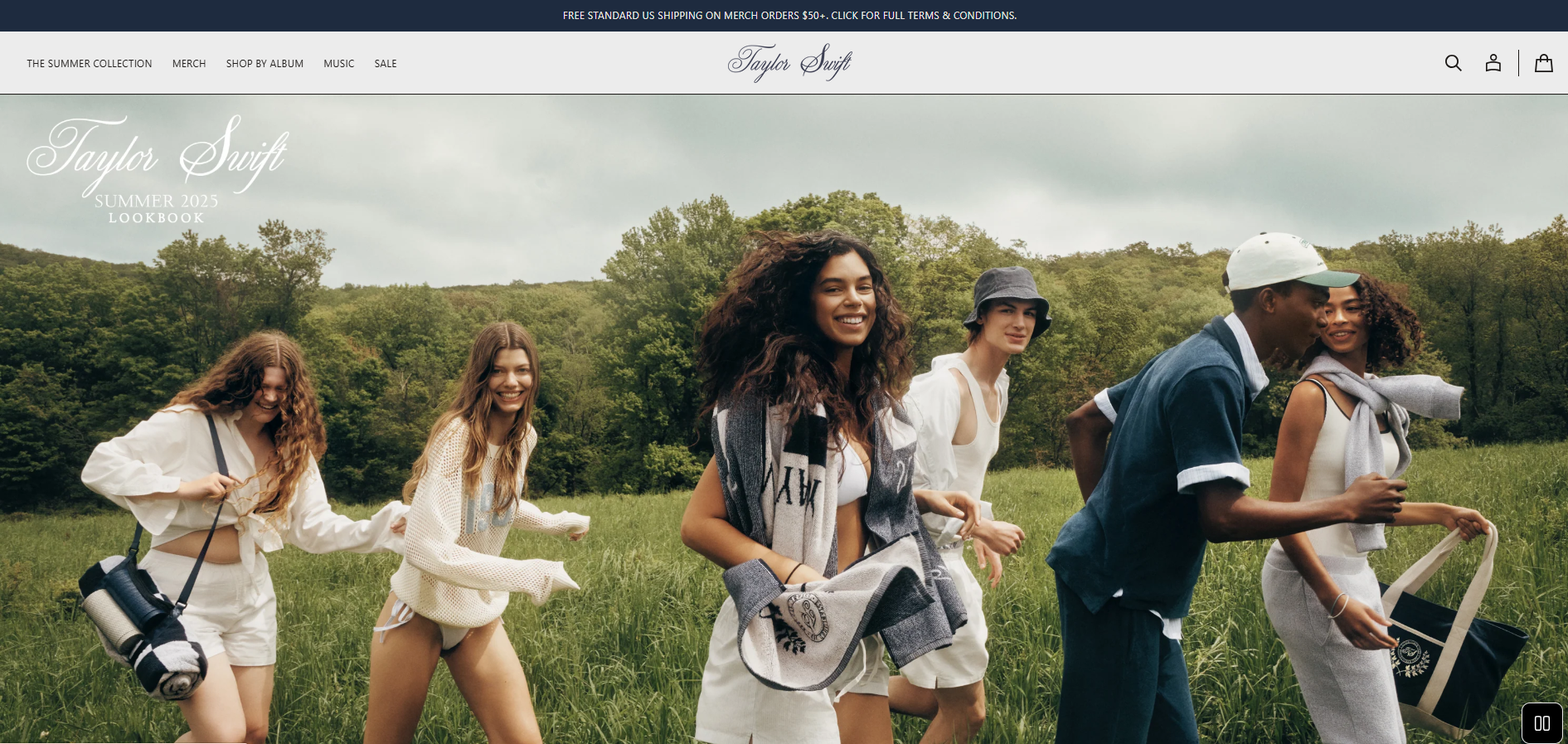 In 2023, Taylor Swift expanded beyond music to showcase her global influence with her Eras Tour merchandise sold through an online store on Shopify. As a cultural pillar with millions of fans, her challenge was not creating products, but getting them delivered.
In 2023, Taylor Swift expanded beyond music to showcase her global influence with her Eras Tour merchandise sold through an online store on Shopify. As a cultural pillar with millions of fans, her challenge was not creating products, but getting them delivered.
I’m super protective of my fans. That’s why I’ve taken a lot of things into my own hands. My team and I do it ourselves to make sure the experience is the best it can be for them.
Taylor Swift
With millions of fans in the world desiring to buy, she needed the right platform to handle viral traffic and an unexpected rise in sales.
In the past, even some of the world’s biggest celebrities like Beyoncé and Rihanna struggled with unreliable online stores during peak sales periods. To avoid those issues, Taylor Swift’s team chose Shopify, which has a proven history of powering billion-dollar brands.
Shopify did not disappoint. On the day the store launched, Swift's merchandise store sold out of key items within hours. With built-in features like integrated payment systems built for mobile, plus global shipping, all their fans could buy the products seamlessly.
Shopify's scalable framework was the backbone to meet the demand, which led to the record-setting Q3 2023 performance, 22% growth in GMV, 25% growth in revenue, and 36% growth in gross profit. Swift’s store launch also played a key role in achieving these strong results.
Overall, the Eras Tour produced a total estimated economic impact of 7 billion, which highlights how Swift's investment in a direct-to-consumer retailer through Shopify was able to expand, not just revenue, but a cultural impact.
When someone as influential as Taylor Swift supports small businesses, it creates a huge impact. Our platform was built to manage massive demand and make sure fans have a seamless experience, even at the busiest times.
Harley Finkelstein, Shopify President
4. Decathlon
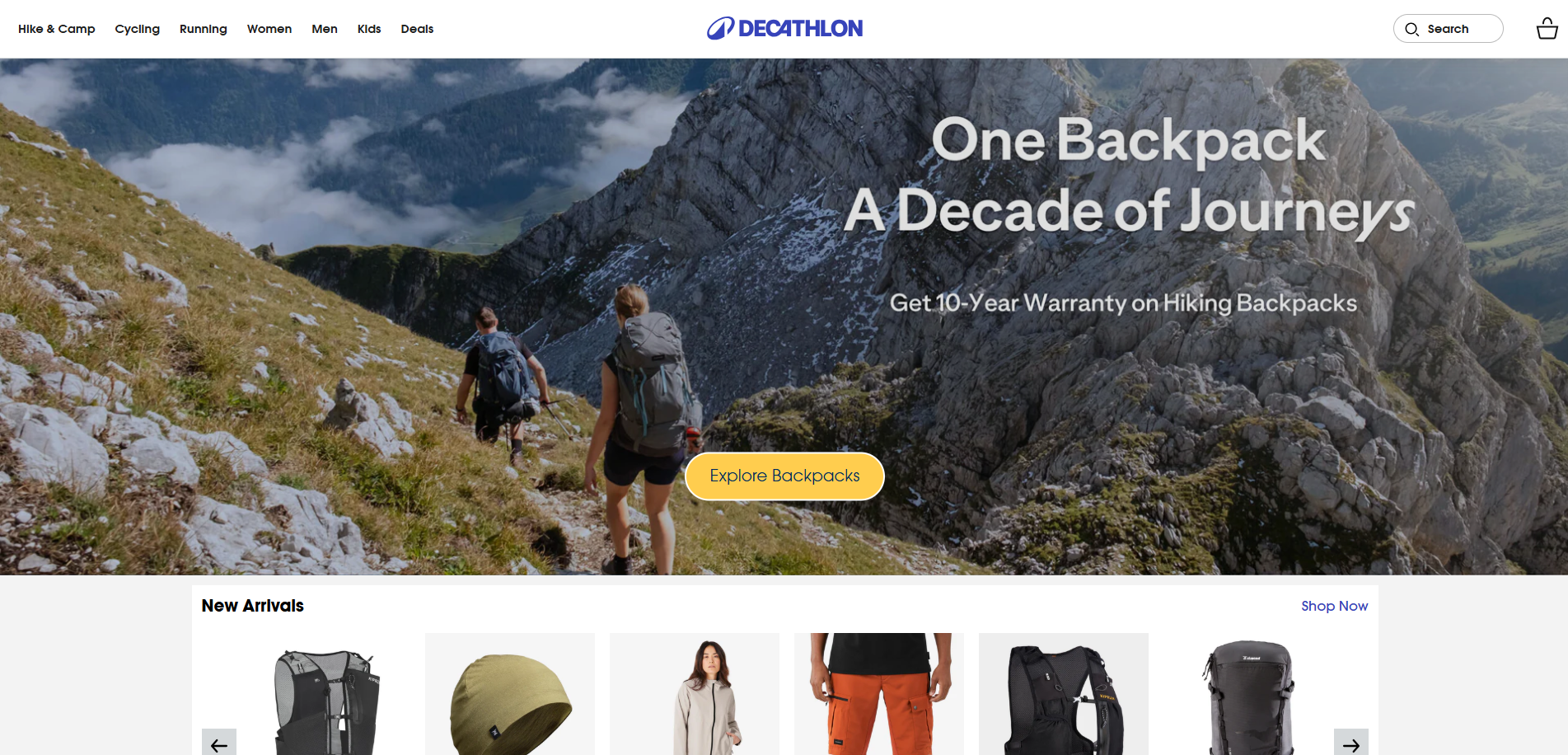 Decathlon is the largest sporting goods retailer in the world and has provided quality and accessibility in sports from the beginning. As Decathlon began to scale in the U.S., equal competitors were heavily data-driven, and analysis turnaround was everything. Decathlon had a solid global branding strategy, but under the U.S. sky, Decathlon was using outdated analytics tools that slowed decisions and complicated performance tracking.
Decathlon is the largest sporting goods retailer in the world and has provided quality and accessibility in sports from the beginning. As Decathlon began to scale in the U.S., equal competitors were heavily data-driven, and analysis turnaround was everything. Decathlon had a solid global branding strategy, but under the U.S. sky, Decathlon was using outdated analytics tools that slowed decisions and complicated performance tracking.
With solutions like Glew, Decathlon USA had a little insight into the areas that were looping, there was a delay in acting on metrics that mattered. Reports were overloaded with manual reporting, too many team divisions, and delays around getting timely decisions. Technical resources were spent just trying to interpret very basic data, and it was clear that if Decathlon USA wanted to meaningfully grow in the U.S., they needed to make data operations smart and seek a way to gain more accessible and real-time insights into the organization.
With Shopify Plus and ShopifyQL Notebooks, Decathlon USA was able to analyze store performance in real time.
Without ShopifyQL Notebooks, I’d just export data to Sheets or Excel, which quickly becomes outdated. Notebooks let us explore data and share insights continuously, which is essential for our e-commerce brand.
Tony Leon, CTO, Decathlon
Static spreadsheets were replaced with dynamic dashboards that not only cut 60% off data analysis time and 50% off reporting time. That enabled teams to generate and act upon insights independently, meaning teams could move faster, optimize their campaigns, and operate more efficiently. This change improved Decathlon USA's internal work processes and positioned them to scale smarter in a fast-paced, digitally native environment.
Want a Shopify store like these brands?
Let’s talkLoading...
5. Daniel Wellington
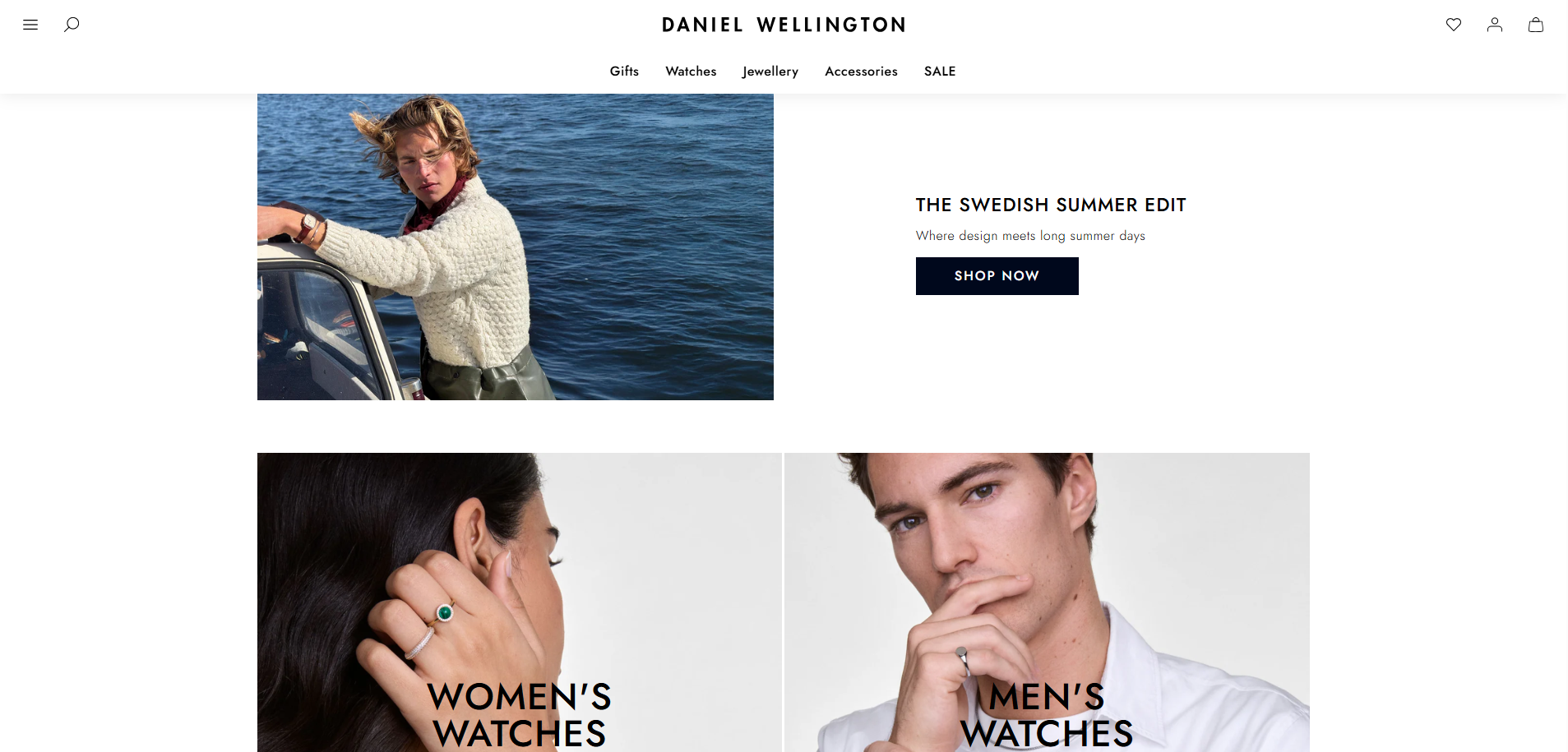 Launched in 2011, Daniel Wellington transformed from a minimalist watch startup to a recognized global fashion accessory brand at exceptional speed.
Launched in 2011, Daniel Wellington transformed from a minimalist watch startup to a recognized global fashion accessory brand at exceptional speed.
With viral marketing successes and partnerships with influencers, demand quickly grew across multiple markets, but the brand's original e-commerce business model couldn't support the rapid consumer growth.
Daniel Wellington expanded quickly, launching and managing localized stores in major global markets quickly became overly complex technically and economically. To simplify operations and support its ambitions for global growth, Daniel Wellington migrated to Shopify Plus.
We were looking for a platform that offered ready-made solutions to replace CommerceTools, which demanded a large tech team and in-house hosting. We wanted to maintain our global reach and meet local needs, but with far fewer resources.
Joakim Isaksson, Development Manager of Daniel Wellington
This move ultimately yielded a 50% reduction in licensing costs, a savings of upwards of 500,000 euros per year, while also eliminating the need for a large team of in-house developers.
Functionality that once took months or years to get up and running was now being launched in a matter of days or weeks. Integrations with tools like Klaviyo and Salsify made it easy to manage marketing and product information.
The migration was a great operational success as it released Daniel Wellington to focus on the most important matters in developing strong customer relationships and building its brand in all corners of the globe.
Daniel Wellington plans to further extend their digital commerce with B2B applications, personalization, and marketplace integrations, continuing to scale with Shopify’s ever-evolving capabilities.
6. Glossier
Launched in 2014, Glossier emerged from beauty blogger Emily Weiss's Into ‘The Gloss’, a community-based site focused on beauty, which inspired Weiss to create a beauty brand. Glossier was able to rapidly grow with its DTC(Direct To Customer) model, driven by the customers' input and feedback, but growth produced new technical challenges.
We ask our customers what they want and listen to their feedback.
Emily Weiss, CEO of Glossier
As demand increased, the custom eCommerce stack they built started slowing down progress and required significant engineering resources to make even the simplest changes. Glossier made the strategic decision to migrate to Shopify Plus to regain agility and put the focus back on customer experience.
Shopify provided meaningful out-of-the-box functionality in a very reliable environment with performance uptime and, ultimately, the evolution that Glossier was looking for.
After Glossier migrated to Shopify, they were able to operate much more efficiently, launch faster, and use a reliable platform with consistent performance, literally around the globe. Their team was able to experiment, iterate, and scale without hesitation, even during drops or campaigns that experienced the highest traffic peaks.
Also, Glossier worked with the Shop app to create a fun in-person scavenger hunt to launch their new product, Boy Brow Arch, where a scavenger hunt is a fun game where you search for hidden clues or items in different places. Fans across three major US cities, NYC, Chicago, and Los Angeles, were able to scan location-based posters to shop the product ahead of an official launch, taking advantage of location technology to allow fans exclusive early access.
Overall, the outcome was a beauty company that stayed committed to its community and approached operations with a similar pace as a tech-first company. With Shopify Plus, Glossier transformed its DTC dreams into a seamless and repeatable experience. When brand and technology work in harmony, beauty brands can achieve growth efficiently on terms that suit them.
7. Skullcandy
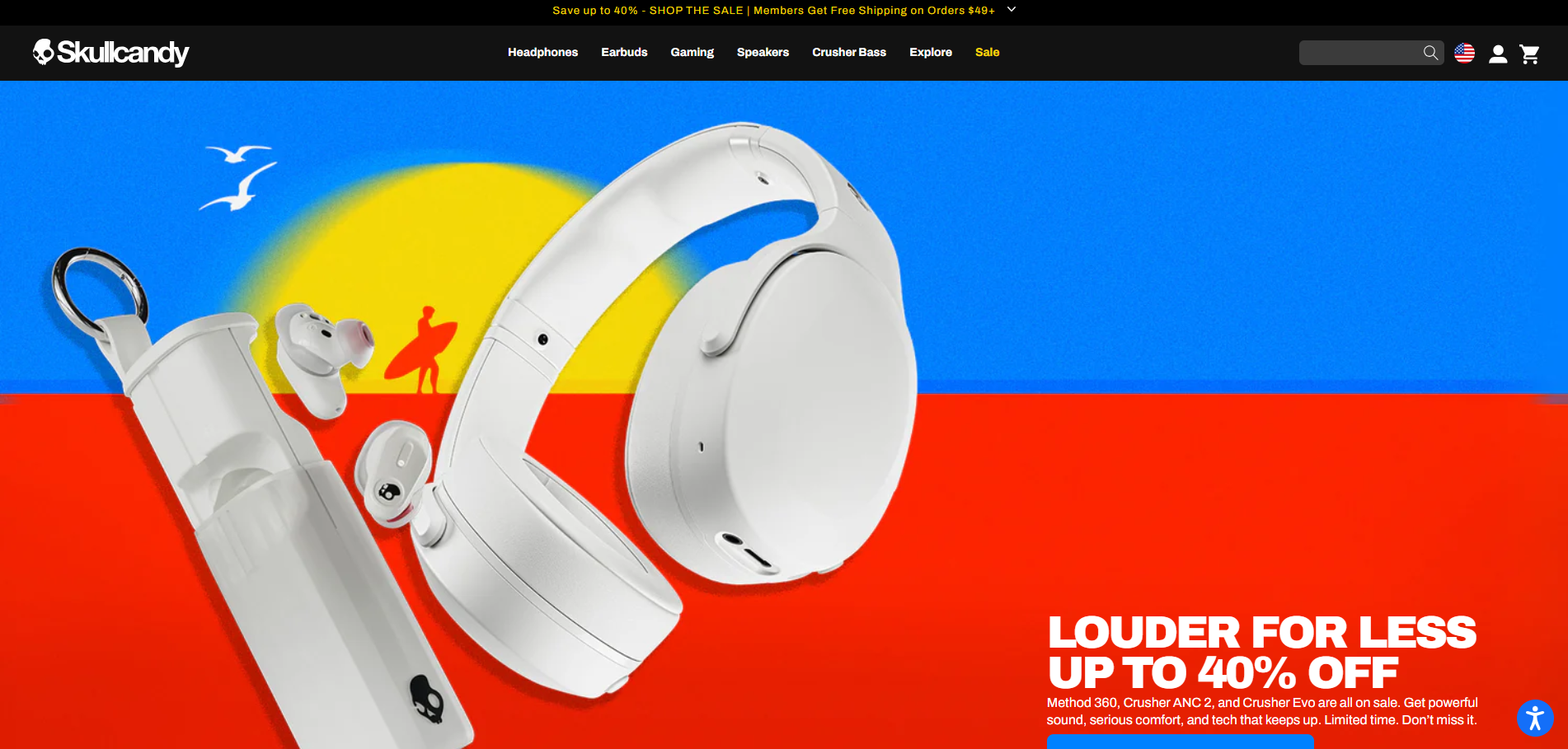 Skullcandy was founded in 2003, quickly becoming the go-to audio brand for youth and a pioneer with stylish headphones and nontraditional branding. However, as the company expanded distribution worldwide, managing multiple regional websites became difficult.
Skullcandy was founded in 2003, quickly becoming the go-to audio brand for youth and a pioneer with stylish headphones and nontraditional branding. However, as the company expanded distribution worldwide, managing multiple regional websites became difficult.
Skullcandy's legacy eCommerce solution had made internationalization slow, complicated, and expensive to maintain. As part of their commitment to better serving our global customers and streamlining operations, Skullcandy moved to Shopify. Shopify also allowed Skullcandy to run localized storefronts from one backend and also support different languages, currencies, and promotions.
Product launches that once took one to two days now happen in under 30 minutes, giving the brand the speed to test new ideas and go to market faster.
We used to take months to launch a new store, but now it only takes days, making the company much more agile.
Mark Hopkins, IT Director, Skullcandy
Site performance also saw a measurable improvement. Homepage load times dropped from 2.6 seconds to just 0.8 seconds, enhancing the customer experience and boosting conversions.
The team now enjoys the autonomy to conduct A/B testing and iterate faster, empowering both marketing and creative teams to experiment without being slowed down by platform constraints.
The impact was immediate with improved site performance, faster time to market, and better control over the customer experience. Working with the flexibility of Shopify’s infrastructure and its ecosystem of integrations, Skullcandy was able to amplify its digital footprint while remaining true to its brand.
8. Fashion Nova
 Fashion Nova started as a regular store back in 2006, and after growing quickly for a few years, they launched their online shop in 2013. They became really popular by working with influencers and constantly releasing trendy, dazzling clothes quickly.
Fashion Nova started as a regular store back in 2006, and after growing quickly for a few years, they launched their online shop in 2013. They became really popular by working with influencers and constantly releasing trendy, dazzling clothes quickly.
With millions of fans on social media and a strong taste for rapid product turnover, their only real challenge appeared to be keeping their digital storefront moving as quickly and lively as their online content.
When demand exceeded expectations, it became clear that their previous e-commerce platform could not keep up with the overwhelming traffic during a flash sale. It also couldn’t keep up with the demand to launch around 500 new styles each week, reflecting Fashion Nova’s rapid product turnover.
We drop about 500 new styles every week, far more than what most big brands release in a year, and our customers keep coming back for more.
Richard Saghian, Founder and CEO of Fashion Nova.
Having exhausted the other eCommerce options, Fashion Nova moved to Shopify Plus, with a clear objective of needing speed, stability, and above all, scalability.
By switching to Shopify, the brand was able to use an agile eCommerce engine that could support limitless product catalogs, high-volume checkouts, and mobile experiences.
Most recently, in 2024, Fashion Nova migrated to Shopify's headless commerce framework, Hydrogen, built on Remix. This shift allowed them to build a fully custom storefront that delivers lightning-fast performance while giving their teams the creative freedom to design trend-aligned experiences.
Hydrogen also ensures the site can handle massive spikes in traffic, especially during high-volume events like Black Friday, without compromising on speed or responsiveness.
For Fashion Nova, the outcome was a digital storefront as fast and on-trend as the brand itself. Through Shopify, Fashion Nova turned public interest into reliable sales and proved that in the world of fast fashion, speed of technology is everything.
Conclusion
Shopify is changing the enterprise eCommerce landscape. Its flexible, innovative, scalable infrastructure has made it the default platform for global brands that require speed, agility, and performance. As features such as headless commerce, AI-driven insights, and omnichannel business models mature, Shopify will continue to drive fast digital transformation for the most ambitious companies across the globe.
For businesses evaluating Shopify, we’ve a message for you. If you want a platform that can grow with your brand and drive modern digital experiences, Shopify is a proven leader, and it works. And with Shopify's capability to combine commerce across platforms, channels, and geographies, businesses can have a significant advantage over their competition.
WAC is a Shopify development company specializing in high-level, end-to-end Shopify development services built for your brand. At WAC, we help brands to launch today, scale globally, and succeed tomorrow with Shopify’s proven platform and our end‑to‑end capability. Looking to build or scale your Shopify team? Hire Shopify developers from WAC to bring world-class eCommerce expertise to your business.
Ready to become the next big Shopify success story?
Let’s talkLoading...
Discover Digital Transformation
Please feel free to share your thoughts and we can discuss it over a cup of tea.










